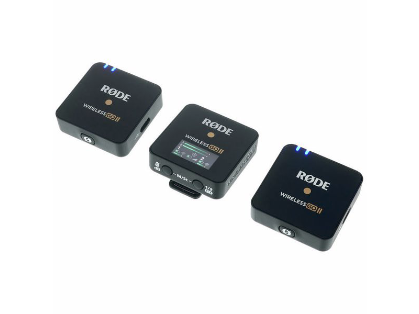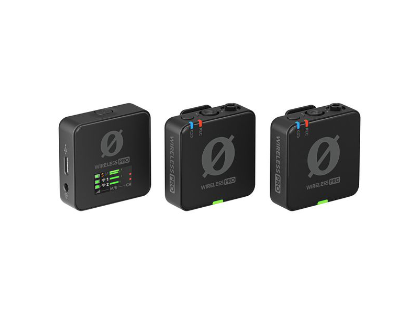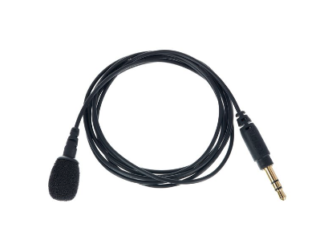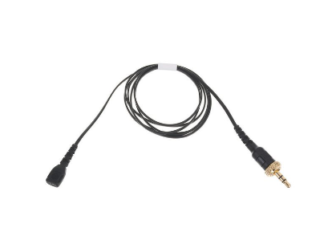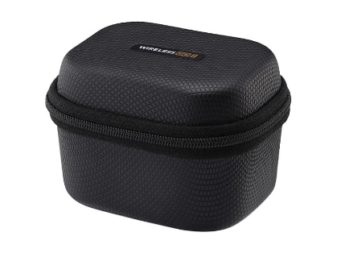Rode Wireless PRO vs. Rode Wireless GO II
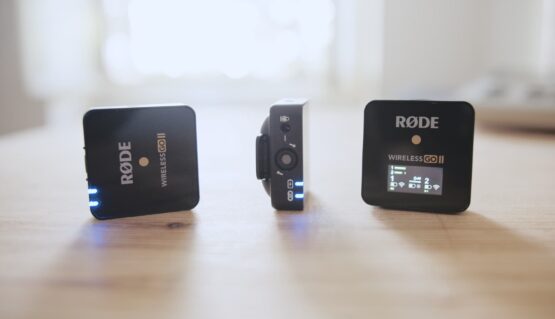
RØDE has introduced its latest wireless microphone system, the Rode Wireless PRO.
Although not the successor to the GO II, the PRO share's a lot of similarities to the top-selling wireless system, and is designed to provide a professional-grade solution for a wide range of applications.
If you are on the look-out for a reliable compact system the PRO could be the answer, but are the differences so desirable that it's worth trading in your trusty GO II?
The newly released Rode Wireless PRO includes a range of impressive advancements that push it into the realm of professional-grade wireless microphone systems. It is the next tier of RODE compact systems and an evolution of the the Wireless Go II, which was released in early 2021, and immediately became a best-seller.
Both have good internal storage, with the PRO seeing an increase of 16 hours recording of uncompressed audio compared to the GO II (tech spec comparison below). This could be a primary storage medium but serves better as a back up when you are recording directly to camera. Functionality remains the same, and once the drive is full it will automatically start recording over the oldest recordings for seamless capture, assuring that takes are not lost.
Both claim to ensure reliable and interference-free wireless transmission, even in crowded RF environments, but still the internal storage can be a lifesaver. As very satisfied users of the Go II, we have encountered interference to the RX signal, which didn't affect the audio recorded to the internal memory back-up, assuring that takes were salvageable.
Even more reassuring is that ability to operate a safe channel on both devices, so not only is there a safeguard against loss in signal when recording to camera, the individual TX modules can record two channels of audio with one at a reduced gain of -20dB (similar to the pad setting on a microphone) to keep your takes safe from possible clipping.
The RODE Central app must be used to retrieve audio from the devices and although there are a few niggles with the functionality, such as not being able to export multiple audio files, it's worth it to know your recordings are there. You are also able to monitor the devices from the app, checking battery life and operation, but the RX module gives you this visual feedback and the included cold-shoe adapter means you don't have to look too far to check everything is as it should be. It would be great to be able to use the devices natively and export audio as you would from an external drive, but it's a minor grumble.
Vs the GO II, the PRO has an increase in line-of-sight range of 60 meters, and there are dynamic and frequency range improvements. However, the features that truly set it apart are the SMPTE timecode generator for precise synchronization between audio and video recordings, increased internal storage and a lockable 3.5mm TRRS input on the TX module.
Unlike the GO II, which can capture frequencies starting at 50hz, the PRO starts at 20hz, but as as these are mostly designed for dialogue capture, and most sub bass frequencies will be rolled off in post, you would need to decide for yourself if this is something you feel would be of benefit.
Both the PRO and GO II have up to 7 hours of operation on a single charge, so no change there, but the PRO does come with a charging case included, which allows for two full charges of all devices. If you are using both transmitters simultaneously you are still going to need some charging downtime, and for that reason it would be great to see user-replaceable battery packs becoming the norm at some point in the near future, something akin to the Tentacle Sync replacement pack for their TRACK-E and SYNC E devices. I don't see this as a step back into the realm of switching out double AA's every two hours but a good back-up option, especially if you are on a shoot with a tight schedule and minimal breaks.
That said, for what you are getting here there is little to complain about with either system, and with the GO II and PRO, RODE have covered most of the desired features (and then some), offering professional level gear at the low end of the market.

Alternatives
For those in search of an alternative, the DJI MIC offers a compelling middle-ground solution, boasting an impressive range of up to 250 meters. These devices also provide a commendable 14 hours of recording capacity in an uncompressed format.
In terms of connectivity, the DJI MIC offers a variety of options, including a 3.5mm TRS input, 3.5mm TRRS, and USB-C for charging. Notably, the RX module even includes an additional headphone output, a feature absent in both the RODE offerings. However, unlike the Wireless PRO, the DJI MIC lacks an SMPTE timecode generator, limiting its versatility in professional video production scenarios. Additionally, the DJI MIC's modules come with a shorter battery life, with the transmitter offering 5.5 hours of operation and the receiver providing 5 hours, necessitating more frequent recharging during extended shoots.
When comparing tech specs side by side, the GO II outshines the DJI MIC. However, when it comes to accessories, the DJI MIC is hard to beat. Alongside the essential cables and adapters, it comes with its own charging cradle, a convenient carrying case, magnetic clips, and a lightning adapter as standard, making its accessory bundle nearly as impressive as the Wireless PRO. One noteworthy feature of the DJI MIC is its user-friendly approach to exporting audio files, which can be done easily without the need for an app – simply by plugging it into a computer.
Real-world scenario
While both the Rode Wireless GO II and Rode Wireless PRO offer excellent wireless audio solutions, your choice should align with your specific audio needs. The SMPTE timecode generator, which for professional work isnt just a luxury, but a necessity, is a great addition here, but if you need this to make your own review videos, or are vlogging there are other options for audio sync in post.
For example, for the type of work we do for our YouTube channel, the GO II is perfect. Typically we are interviewing vendors or reps for audio companies and have become accustomed to leaving one channel on our Pocket 4K set to in-camera sound so that aligning audio in Resolve is a one-click operation.
If cost is the only consideration, the inclusion of accessories in the PRO package further enhances its appeal, but the wireless GO II bundle (including charging cases) and the separate purchase of two RODE Lavalier GO microphones would come in at less than the PRO package, however, the PRO comes with the newer Lavalier II microphones with locking jack.
Either way, the PRO looks impressive and is hard to beat in this price range, given the features and accessories. For now we are happy with the GO II, but the PRO is definitely on our shopping list for when we need to upgrade.
